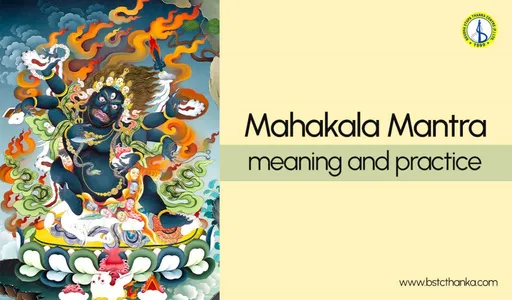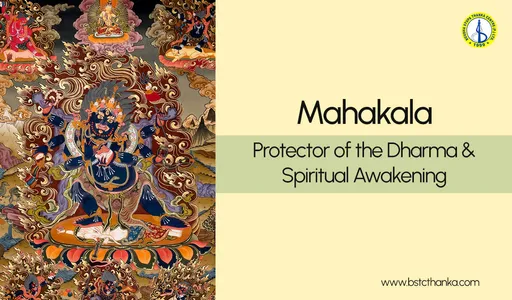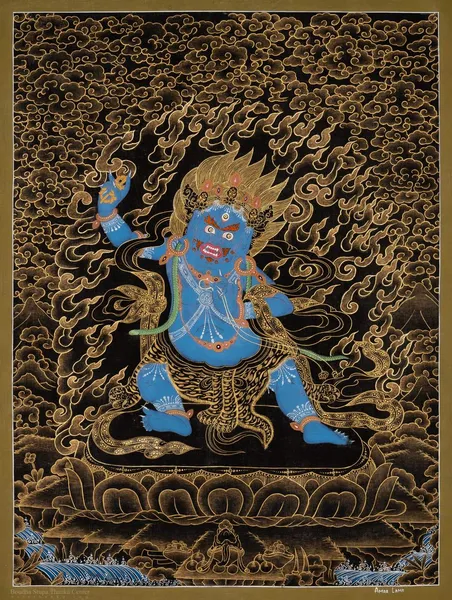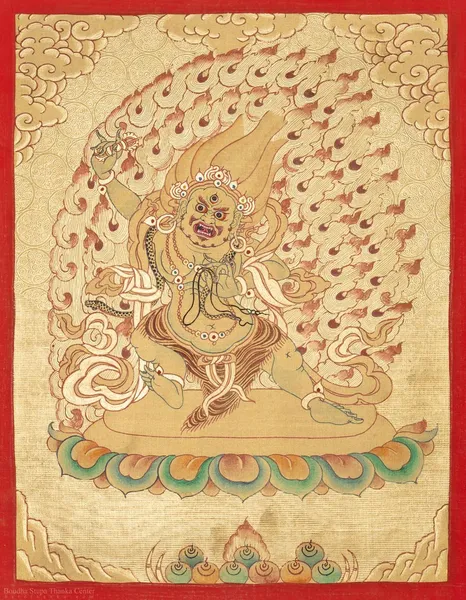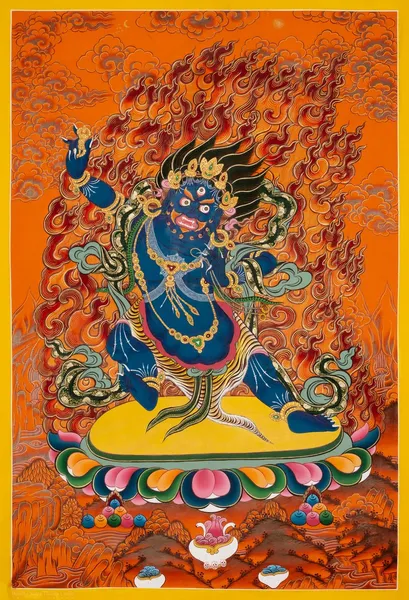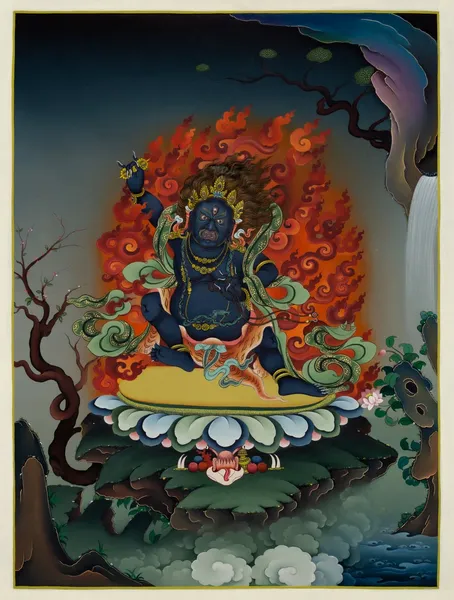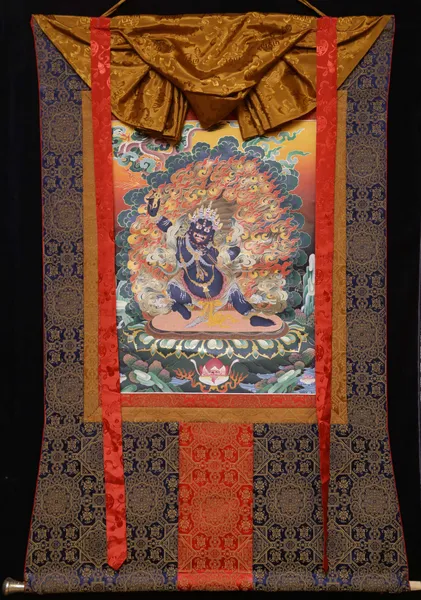
Vajrapani
Vajrapani: The Powerful Protector
Vajrapani is a remarkable figure in Mahayana Buddhism, and this name makes people think of great power and strong determination.
He is a Bodhisattva, a being who has attained enlightenment but chooses to remain in the world to guide others on their own journey. But Vajrapani is more than just a kind and wise teacher. He is also a fierce protector, a wrathful embodiment of the Buddha's power that vanquishes negativity and clears the path to liberation.
Vajrapani's most striking feature is his powerful vajra, a diamond scepter symbolizing immortality and the power to cut through ignorance. On the other hand, he often wields a lasso, representing his ability to skillfully capture and suppress obstacles on the path to enlightenment. This duality—fierce power balanced by compassionate guidance—is central to Vajrapani's essence.
In Sanskrit, 'Vajra' translates to thunderbolt or diamond, symbolizing indestructibility and enlightenment, while 'pani' means in the hand. Thus, Vajrapani is often interpreted as the wielder of the thunderbolt, representing the power to shatter delusion and ignorance.
Vajrapani's wrathful appearance, often depicted with a dark blue complexion and a fierce expression, can be misunderstood. It doesn't represent anger, but rather the strong will to remove negativity and awaken us from the slumber of illusion. His angry eyes are a call to us to cultivate courage and confront the obstacles that hinder our progress.
Vajrapani stands as a powerful reminder that the path to enlightenment is not always peaceful. There will be challenges, doubts, and negativity to overcome. But with Vajrapani by our side, we have a protector who embodies the power of the Buddha's wisdom and compassion. He guides us with his lasso and clears the way with his vajra, reminding us that enlightenment is attainable for all who walk the path with courage and determination.
Vajrapani is revered in various Buddhist traditions, including Tibetan Buddhism, where he is considered one of the three principal Bodhisattvas, alongside Avalokiteshvara and Manjushri. Devotees often invoke Vajrapani's presence through prayers, mantras, and visualizations to cultivate inner strength, courage, and protection.
Vajrapani FAQ
Who is Vajrapani?
Vajrapani is a Bodhisattva in Mahayana Buddhism, known as a powerful protector and embodiment of the Buddha's enlightened power.
What is the meaning of his name?
Vajrapani's name comes from Sanskrit. Vajra means "diamond" or "thunderbolt," symbolizing indestructibility and power. Pani means "hand," referring to his characteristic weapon, the vajra. So, Vajrapani can be translated as "the one with the vajra" or "the indestructible hand."
What does Vajrapani symbolize?
Vajrapani symbolizes several things:
- Power and Strength: He embodies the unwavering power and determination needed to overcome obstacles on the path to enlightenment.
- Protection: He is a fierce protector who vanquishes negativity and clears the way for those seeking liberation.
- Compassionate Guidance: Despite his wrathful appearance, he acts with compassion to guide beings towards enlightenment.
How is Vajrapani depicted?
Vajrapani is often depicted in a wrathful form, with a dark blue complexion and a fierce expression. He typically holds a vajra in one hand and a lasso in the other. He may also be shown with multiple heads and arms, depending on the specific form.
What is the significance of the vajra and lasso?
- The vajra represents Vajrapani's power to cut through ignorance and negativity.
- The lasso symbolizes his skillful means to capture and subdue obstacles on the path to enlightenment.
What is Vajrapani's role in Buddhism?
Vajrapani plays a key role in Vajrayana Buddhism, a branch of Mahayana that emphasizes tantric practices. He is seen as a protector of these practices and their teachings. He also serves as a source of inspiration, reminding practitioners of the unwavering strength needed for spiritual progress.
Is Vajrapani the same as a wrathful deity?
While Vajrapani has a wrathful appearance, he is ultimately motivated by compassion. True wrathful deities, known as dharmapalas, are protectors who can be quite fierce and even destructive.






.webp)
